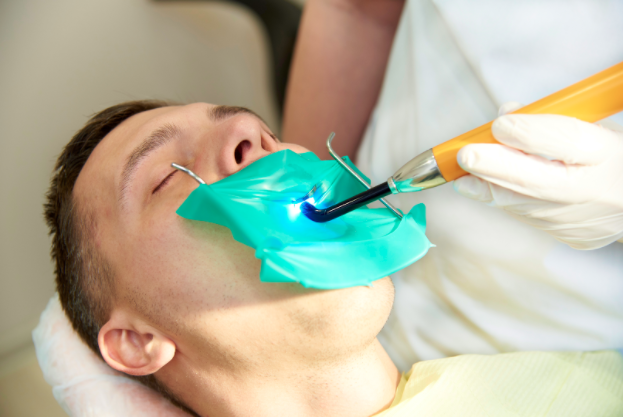No one likes their beautiful smile to be overshadowed by a chipped, cracked, or discolored tooth. Our natural teeth are tremendously strong but not indestructible. Bonding is a cosmetic dental procedure which repairs chipped, cracked, and broken teeth. It helps with discolored teeth, gaps between teeth, and even lengthening a tooth shorter than the rest.
The availability of cosmetic dental procedures like tooth bonding can take your worries away and enhance your smile.
How does bonding work?
Essentially, bonding is a process in which an enamel-like material is applied to the surface of a tooth, sculpted to an ideal shape, hardened, and polished for a perfect smile.
You can bring a chipped, cracked, or broken tooth back to its former glory with the help of bonding. Bonding is a cosmetic dental procedure that also helps take care of discolored teeth, gaps between teeth, and even lengthens a tooth that is shorter than the surrounding ones.
The “bond” in bonding is a composite resin that takes over the part where your tooth broke and made it look as good as new. Unlike a crown that is used for filling, the composite’s color can resemble the color of the tooth so that it continues to look natural. It’s cost-effective as it is considerably less expensive than other cosmetic dental procedures, such as crowns and veneers.
Here are a few benefits of dental bonding
- In addition to repairing teeth that have been chipped, cracked, or injured, dental bonding can be used instead of silver fillings to fill a decayed tooth.
- It improves the appearance of stained or discolored teeth, especially when teeth whitening may not give adequate results.
- Unless bonding is preceded by repairing tooth decay or removal of additional tooth structure, it is a completely painless procedure, requiring no anesthesia.
- Fills in large gaps between your teeth
- Give a uniform appearance to your teeth
- Bonding improves natural tooth strength and fracture resistance.
- It is a fast procedure requiring not much downtime. If your procedure took place without any anesthesia, you could go back to your regular routine immediately after.
Disadvantages of dental bonding
The resin material used for dental bonding does not resist wear and staining over time, as well as veneers and porcelain crowns. Excessive smoking or coffee intake can lead to discoloration. While dental bonding is relatively cheaper, quicker, and painless, it may not last long as compared to other tooth restoration options.
Ways to take care of your bonded tooth
Taking care of your teeth will help you prolong the life of your bonded teeth. The following are a few self-care tips which will help you:
- Brush and floss your teeth at least twice a day
- Avoid biting on hard food and candy
- Avoid biting your nails.
- For the first two days after the procedure, avoid-coffee, tea, and tobacco to stay devoid of stains.
- Schedule regular dental cleanings
Consult a dentist if you chip or break the bonding material, or if you feel any sharp or rough edges after the procedure.
Oak Brook smiles with us.
The benefits of tooth bonding are obvious. Bonding is an effective way to take care of your teeth quickly at a lesser cost. Dr. Kimet and the team take the utmost care to ensure that you have a wonderful experience at the clinic and get to flaunt a flawless smile once again.
Dr. Kimet will evaluate your teeth and discuss your options to find out if bonding is right for you. Book an appointment with Dr. Kimet or call Dental Care of Oak Brook today.
At Dental Care of Oakbrook, we offer a wide variety of cosmetic dental procedures to correct misshapen, discolored, chipped or missing teeth for all ages. Our state-of-the-art procedures can change the overall shape of teeth, leaving you with a lasting, beautiful smile.
Visit Dental Care of Oak Brook to get back that perfect smile!


